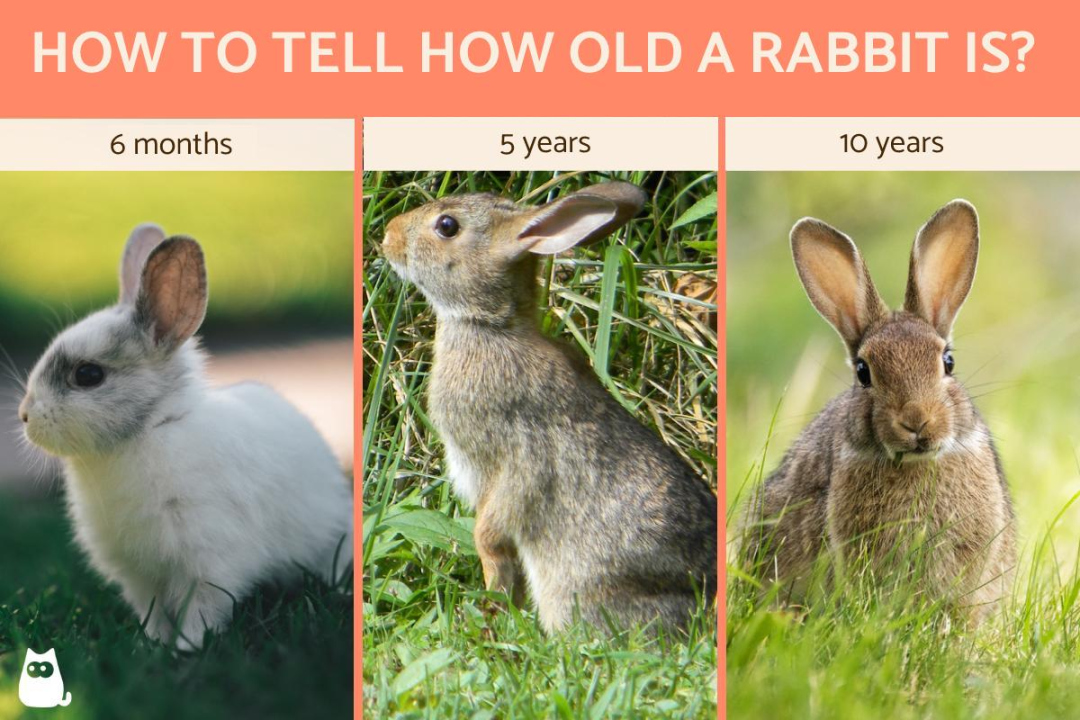How to Tell How Old a Rabbit Is?
Rabbits are adorable and fascinating creatures, but determining their age can be quite challenging. Unlike many other animals, rabbits do not have easily identifiable physical attributes that can help determine their age. However, by examining certain characteristics and behaviors, you can make an educated guess about a rabbit’s age. In this article, we will explore various methods and indicators to help you determine how old a rabbit is.

1. Teeth
1.1 Adult Teeth
A rabbit’s teeth can offer valuable insights into its age. When a rabbit reaches adulthood, around 6 to 9 months old, its permanent teeth will have fully grown in. At this stage, you will notice that the rabbit has two pairs of incisors in the front, followed by a smaller set of incisors right behind them. Additionally, you will see a set of molars on each side of the jaw. These adult teeth will appear clean, long, and well-formed.
1.2 Wear and Tear
Over time, a rabbit’s teeth will experience wear and tear due to normal eating and chewing habits. By examining the condition of a rabbit’s teeth, you can estimate its age more accurately. Young rabbits will have sharp and clean incisors, while older rabbits may have more worn-down and discolored teeth. It is important to note that dental health can vary between individuals, so this method should be used in conjunction with others for a more accurate estimate.
2. Fur
2.1 Fur Color
Another indicator of a rabbit’s age is its fur color. Generally, younger rabbits will have softer and more vibrant fur, while older rabbits may exhibit signs of graying or fading. However, fur color alone should not be the sole factor in determining a rabbit’s age, as individual genetics and overall health can also contribute to changes in fur color.
2.2 Fur Thickness
As rabbits age, their fur may become thinner and less dense. This can be observed by gently running your fingers through the rabbit’s coat. Younger rabbits will typically have a fuller and thicker coat, while older rabbits may show signs of fur thinning, particularly around the back and hindquarters. Keep in mind that this method should be used as a supplementary tool, rather than the sole determinant of a rabbit’s age.
3. Behavior and Mobility
3.1 Activity Level
The activity level of a rabbit can provide some insight into its age. Younger rabbits tend to be more energetic, curious, and playful. They may exhibit frequent bursts of energy, known as zoomies. On the other hand, older rabbits are generally more calm, more reserved, and less inclined to engage in intense physical activities. It is important to note that individual personality traits can influence behavior, so this method should be used alongside others for a more accurate assessment.
3.2 Mobility and Flexibility
As rabbits age, they may experience a decline in mobility and flexibility. Older rabbits may exhibit stiffness or difficulty in moving around, especially when it comes to jumping or hopping. Younger rabbits, on the other hand, are typically more agile and flexible. By observing a rabbit’s ability to move and its overall flexibility, you can gain some insights into its age.
FAQs
How can I determine the age of a newborn rabbit?
Determining the age of a newborn rabbit can be challenging, as they do not have fully developed physical characteristics yet. The best approach is to consult a veterinarian who can provide an accurate estimation based on the rabbit’s weight, size, and overall development.
Can I rely solely on the rabbit’s size to determine its age?
While size can give you a rough estimate of a rabbit’s age, it is not a reliable method on its own. Factors such as breed, genetics, and overall health can significantly influence a rabbit’s size. Therefore, it is always recommended to use multiple indicators, such as teeth, fur, and behavior, to get a more accurate assessment.
Are there any other methods to determine a rabbit’s age?
Yes, there are other methods that can aid in estimating a rabbit’s age. These include examining the condition of the rabbit’s nails, which tend to grow longer with age, and assessing the flexibility of its joints. However, it is important to remember that all these methods are not foolproof, and consulting a veterinarian is the best way to obtain an accurate assessment of a rabbit’s age.
Why is it important to know a rabbit’s age?
Knowing a rabbit’s age can be helpful for various reasons. It allows you to tailor their diet and exercise routine accordingly, as their nutritional needs may change with age. Additionally, it can assist in identifying potential age-related health issues and provide insights into their overall lifespan and expected behaviors.
Related Articles…
Copyright Notice:
All images on this website are obtained from the internet and remain copyrighted to their original owners. If you hold copyright to any image and want it taken down, please reach us.